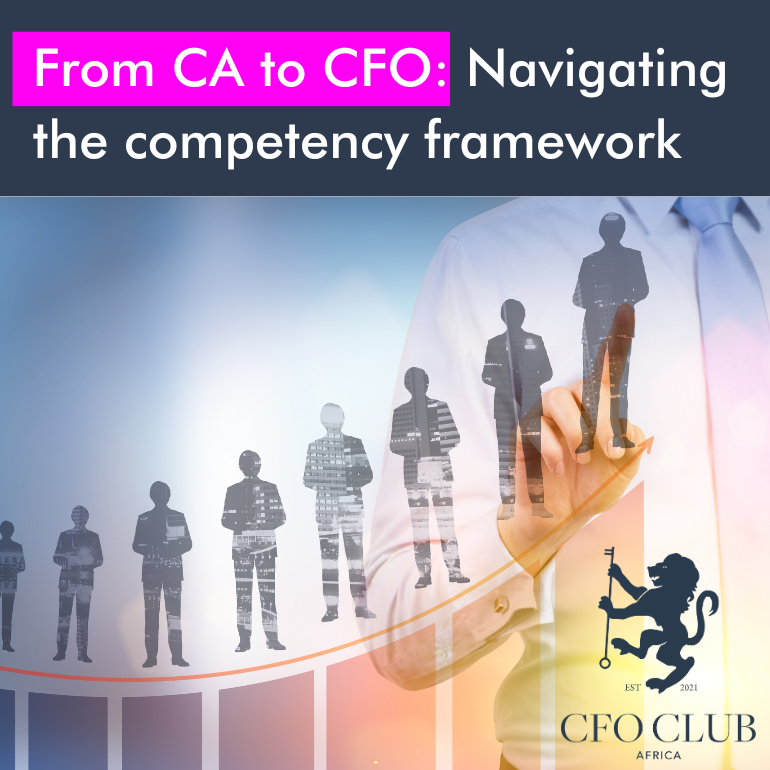The journey from a Chartered Accountant (CA) to a Chief Financial Officer (CFO) is a transformative one, requiring a shift from technical expertise to strategic leadership. The Certified Financial Officer (SA) designation offered by CIBA provides a comprehensive competency framework to guide this transition. This article delves into the details of this framework, highlighting the competencies required and the path to acquiring them.
The CFO (SA) Competency Framework
The CFO (SA) Competency Framework is designed to assist potential applicants in developing the necessary competencies to obtain the Cert. Fin. Officer (SA) designation. This framework is grounded in the ICAO/Queen’s University Collaborative Study, which combined prior literature with a comprehensive survey of financial executives. It identifies 34 competencies structured within the four general roles of a CFO:
- Steward This role focuses on accounting, control, risk management, and asset preservation. The steward ensures company compliance with financial reporting and control requirements.There are 8 competencies associated with this role, including understanding financial information systems, risk management, and fraud prevention.
- Operator: The operator emphasizes efficiency and service levels, balancing cost and service in delivering the finance organization’s responsibilities. This role, which has nine associated competencies, is oriented towards the best practices of the finance function itself. Key competencies include staff planning, project management, and corporate finance.
- Catalyst: As an agent for change, the catalyst establishes a value attitude throughout the organization. With 9 competencies, this role focuses on leadership, communication, corporate governance, and change management.
- Strategist: This role, with 8 competencies, is directed towards defining the company’s future to enhance business performance and shareholder value. It involves goal setting, strategic risk management, and a holistic perspective of the organization.
For each competency, the framework provides a description, methods to develop the competency (through education, experience, or mentorship), and additional details about the competency.
Transitioning from CA to CFO
The transition from CA to CFO is not just about acquiring new skills but also about evolving one’s mindset. While a CA is deeply rooted in technical expertise, a CFO needs to be a visionary leader, a strategic thinker, and an effective communicator. The CFO (SA) Competency Framework serves as a roadmap for this transformation.
- Broadening the Skill Set: Moving from CA to CFO requires a broader skill set. While technical accounting knowledge remains crucial, a CFO must also be adept at strategic planning, risk management, leadership, and communication.
- Developing Leadership and Influence: A CFO must inspire and motivate others, providing guidance and direction to meet organizational goals. This requires strong leadership skills, the ability to communicate effectively, and the capacity to set and achieve visionary goals.
- Understanding the Big Picture: A CFO needs to understand the broader business environment, including industry trends, regulatory changes, and economic factors. This holistic perspective is crucial for strategic planning and risk management.
- Continuous Learning: The journey from CA to CFO is one of continuous learning. The CFO(SA) Competency Framework provides a structured path for this learning, highlighting the competencies required and suggesting ways to develop them.
Conclusion
The journey from CA to CFO is a significant one, filled with challenges and opportunities. The Cert.Fin.Officer(SA) designation provides a structured path for this transition, backed by a comprehensive competency framework. By understanding and developing the competencies outlined in the framework, CAs can effectively navigate their transition to CFO, equipping themselves for strategic leadership in the dynamic world of finance.

